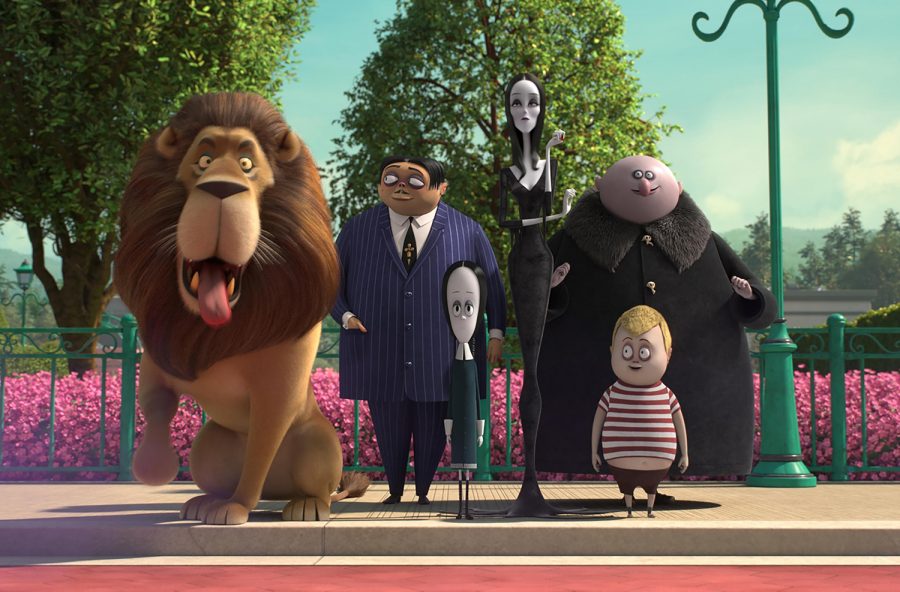Spooky Cinema: The trick to making children’s Halloween movies a treat for viewers
Children’s horror films can do more than scare kids — they can also teach them valuable life lessons.
The Addams family, from left: Gomez (Oscar Isaac), Wednesday (Chloe Grace Moretz), Morticia (Charlize Theron), Uncle Fester (Nick Kroll) and Pugsley (Finn Wolfhard). [Metro Goldwyn Mayer Pictures]
October 16, 2019
The Addams Family returned to the silver screen over the weekend in their newest animated film, and nostalgia for beloved childhood Halloween movies returned with them.
Although adult Halloween is full of thrill, there’s nothing quite like diving back into the feeling of gearing up for a night of trick-or-treating by watching your favorite Halloween movie from childhood. But why is that?
According to University of Iowa Assistant Professor Jessica Moorman, who teaches a class on the effects of the media, these movies may stick with us because they’re a part of us.
“[Movies] can be a socialization tool,” Moorman said. “They’re used to introduce kids to new things.”
On the surface level, Halloween movies are used to introduce children to the world of monsters. As a child, I was fascinated by the lore of practically any inhuman creature, so Halloween was always one of my favorite times of the year.
It’s impossible to recreate the sense of wonder I felt the first time I watched Halloweentown and learned about the world of witches, which is why looking back on it feels so nostalgic.
We’ll probably always remember the Halloween movies we loved as kids, because each time Halloween comes around we’re reminded of them, and, more importantly, are reminded of the way we felt the first time we saw them.
But there’s more that ties to our youthful memories to Halloween than ones of monsters and spells. According to Moorman, even if we may not be consciously aware of it, the media we consume as children not only teaches us, but shapes us.
“I think it’s important for children to be able to see versions and visions of the world outside of the worlds that they occupy,” Moorman said. “It gives them a window into other experiences.”
The Addams Family is a perfect example of this concept. To outsiders, and perhaps even to the audience at first, the Addams are a weird bunch.
Due to their gothic sense of style and unusual interests, most people in their world assume that they’re too strange to share any common ground with, so they avoid the family and their Transylvanian-style home.
However, it’s quickly apparent to the audience that the Addams’ value self-expression and the bond they share with their family, which are values that most people hold. This teaches children to be more accepting of people who appear to be unlike themselves.
The Addams Family is far from the only Halloween movie with this message. Casper, Halloweentown, and Hotel Transylvania have similar themes.
Ghosts aren’t generally friendly, witches are often portrayed as cackling hags, and a hotel full of monsters sounds more like the plot of an actual horror movie than something for children. And yet, each movie turns monsters into lovable characters instead of something to be feared.
“[Halloween movies] serve as a model for encountering new people, and the implications of that,” Moorman said.
This year, take some time to revisit your favorite Halloween movies, and your favorite childhood memories as well.














